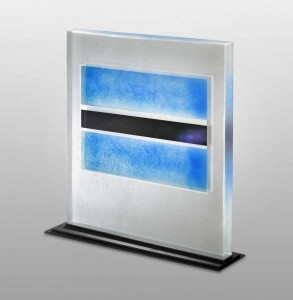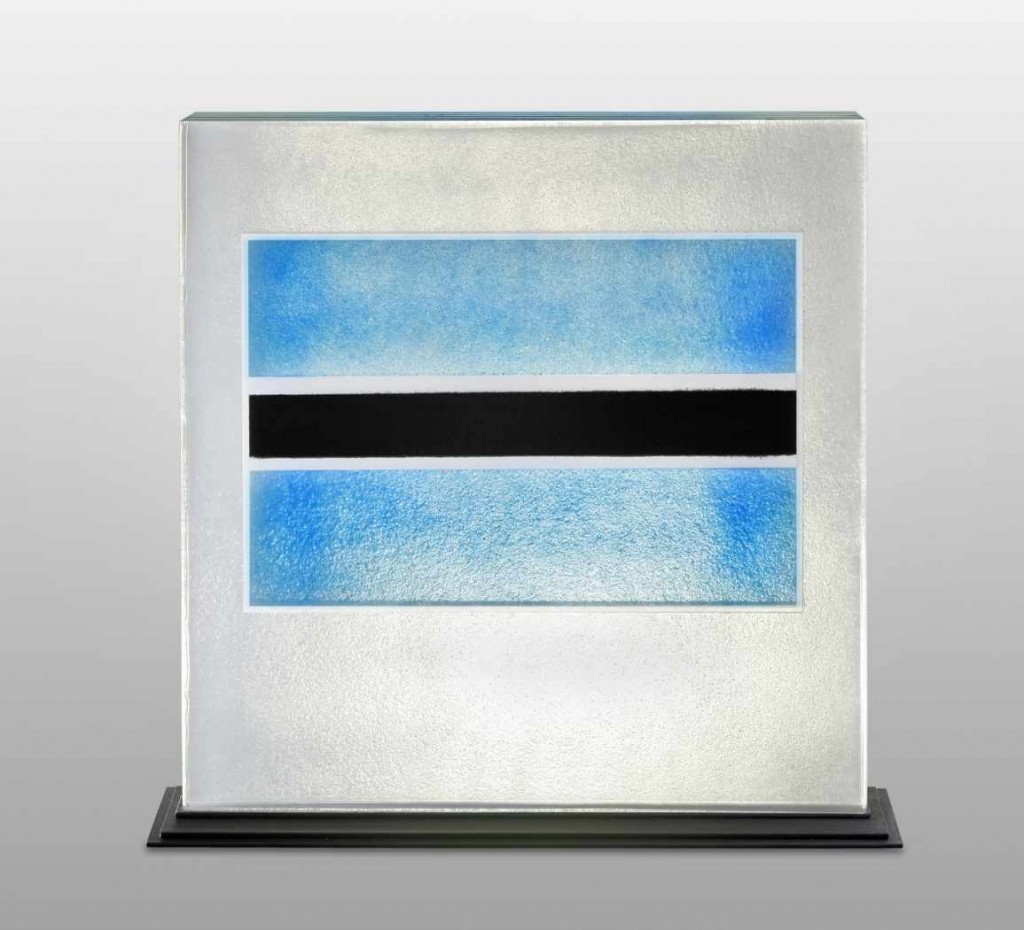 Work available
Work available
Botswana
2012
50 x 50 x 3.6 cm. 28 kg - glass merged in multilayer with inclusion of pigments
![]()
Botswana - called Bechuanaland until independence - was placed under British mandate from 1885 to 1966, at the request of the Tswana chiefs, concerned about the penetration of the Boer settlers from the Republic of Transvaal.
After the victory of the British in the Boer War, Britain established the Union of South Africa in 1910. The new settlement proposed to absorb the Bechuanaland, but Tswana chiefs opposed. It was in 1966 that Britain granted independence. The country since then enjoys a stable democratic regime.
That same year was adopted the flag with two thin white stripes identified black horizontal Strip symbolizes the social harmony and equality of the white and black populations. As azure, it represents the sky and rain which fertilize the soil and makes reference to the Okavango River, which has the peculiarity of never reach the Ocean: its vast delta ends in the Kalahari desert.
Click on the images to zoom
It is also said that the black and white stripes would refer to the zebra, animal symbol of the country, which is represented on its coat of arms. Official name: Republic of Botswana Continent: Africa | Capital: Gaborone Area: 600 370 km2. Population (2008): 1 800 000 inhabitants Official language: English | Currency: Pula Border countries: South Africa, Namibia, Zimbabwe National holiday: 30 September | Motto: That falls the rain Member of the United Nations: October 17, 1966 Member of the UNESCO: 16 January 1980


